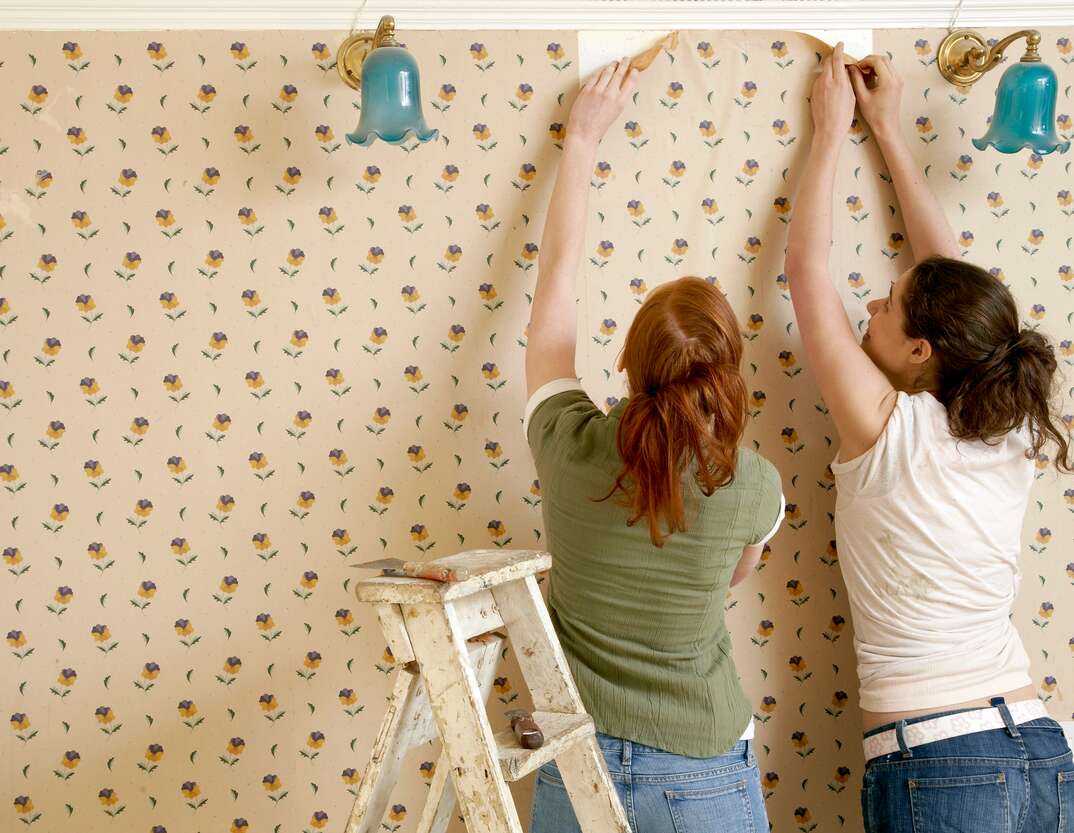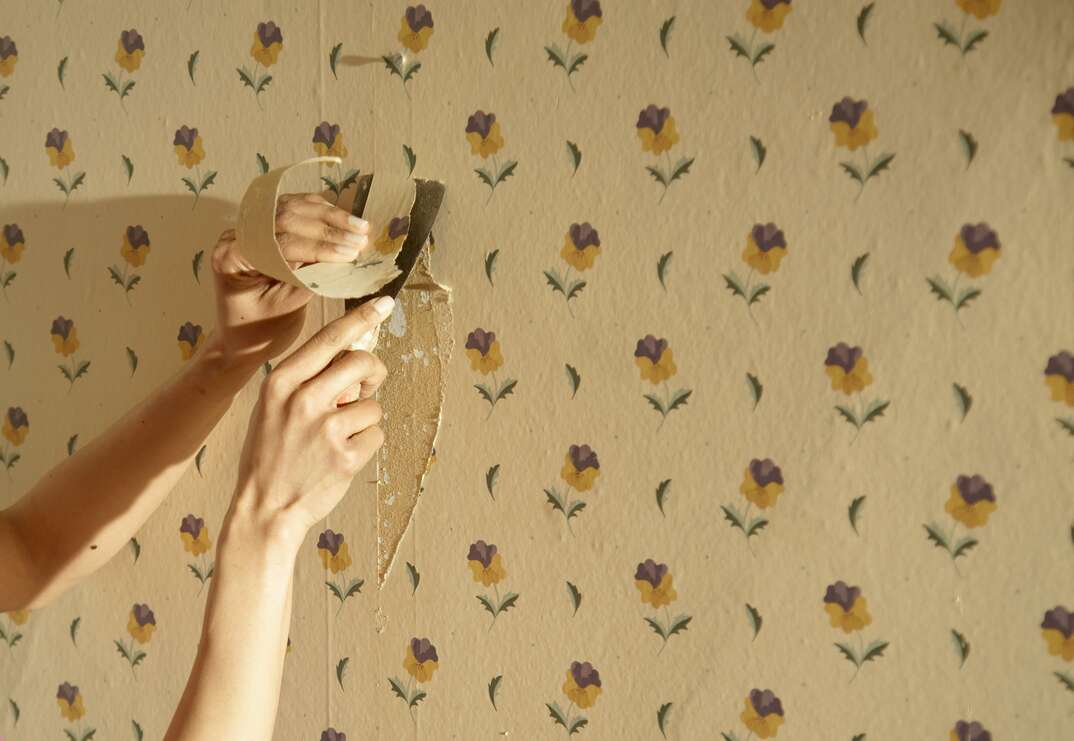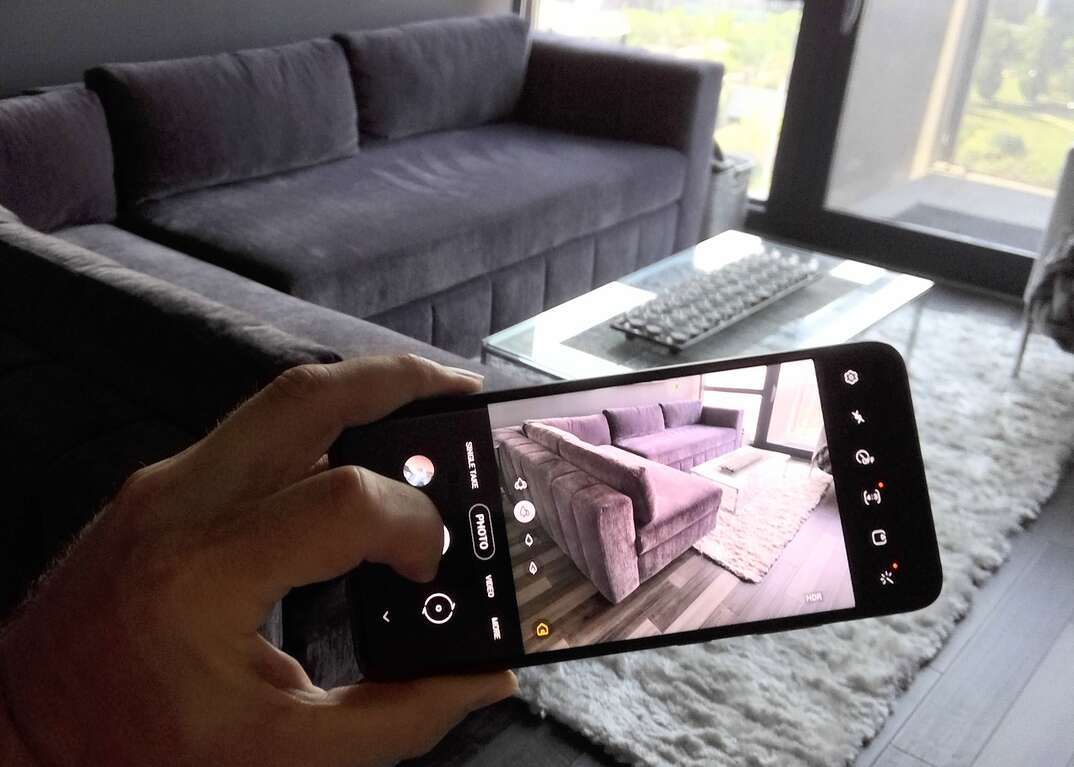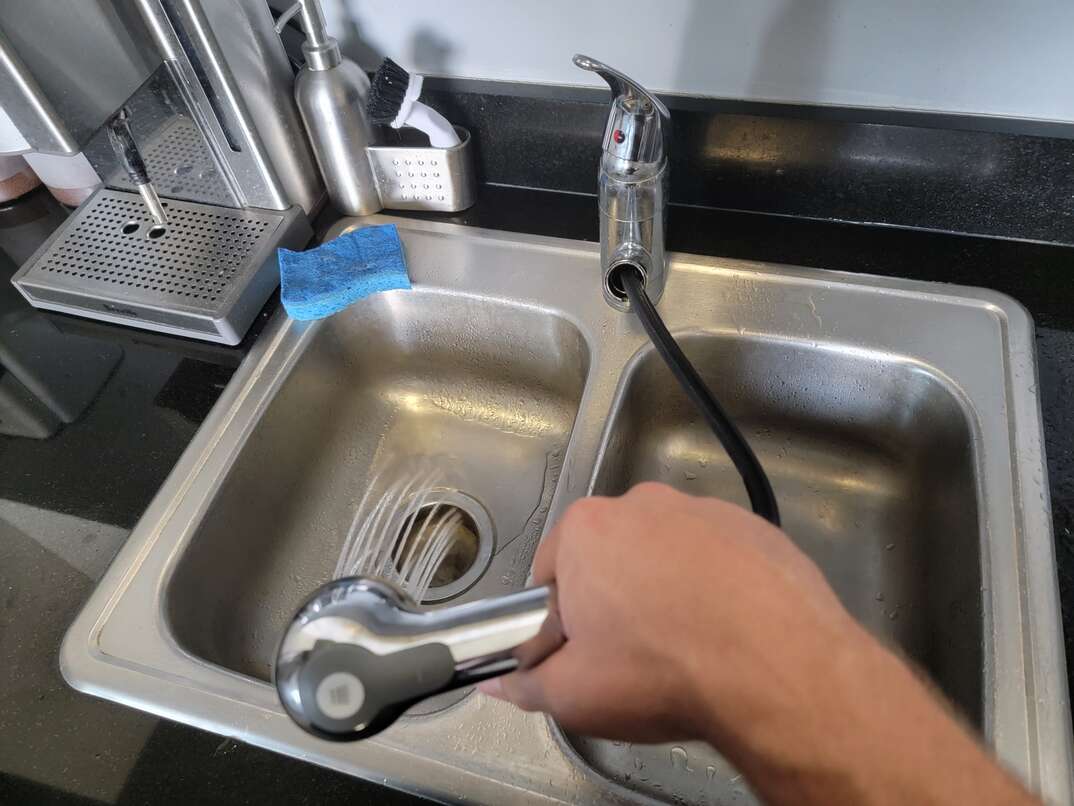How to Remove Wallpaper in 4 Steps

Wallpaper Removal at a Glance
- Step 1: Cover furniture and flooring
- Step 2: Score wallpaper
- Step 3: Mix and apply removal solution
- Step 4: Scrape it off
That floral wallpaper seemed like a good idea when you put it up … a few decades ago. Or perhaps you inherited the previous owner's choice of wall covering. However it ended up on your walls, bad or outdated wallpaper is hard to ignore. Luckily, it’s not so hard to remove. Before you give up and try to paint over it, you’re going to want to read this how-to.
This May Also Interest You: How Much Does Wallpaper Cost?
The best way to remove wallpaper is simply to peel it off. But it can’t always be so easy. Most of the time, you’ll need some extra help to loosen the adhesive. Here’s a step-by-step guide.
Step 1: Prep the Room
Wallpaper removal can get messy, so move furniture away from the walls and cover it with drop cloths. Use a plastic tarp secured to the baseboard with painter's tape to keep your flooring clean. Cover your outlets with painter's tape, too.
Step 2: Score the Wallpaper
You’ll probably need to use a water solution or liquid wallpaper remover on stubborn wallpaper. Some wallpapers repel water, which makes it difficult or impossible for these solutions to work on their own. Using a wallpaper scoring tool creates small perforations on the wallpaper surface. The holes let the water or wallpaper remover reach the adhesive to help loosen it.
Step 3: Apply the Removal Solution
Apply your solution liberally. If you use a commercial wallpaper stripper, follow the instructions for diluting it with water and applying it to the walls.
You can also make your own wallpaper removal solution. Mix one part liquid fabric softener with three parts hot water. According to HGTV, you can also mix one part white vinegar with two parts hot water. With either recipe, using hot water is ideal because it helps dissolve the wallpaper glue faster.
Apply the solution in a small area with a sponge, brush or sprayer, and let it sit for a few minutes to soak in and loosen the glue. You might need to reapply the solution a few times to fully saturate the paper.
Step 4: Scrape the Wallpaper
Use the wallpaper removal tool of your choice to scrape the wallpaper off in sections. A wide putty knife with a flexible blade and rounded corners scrapes well without gouging the wall. Hold the scraper at an angle and scrape gently. Continue applying the solution and scraping until you remove all the wallpaper and adhesive.
More Related Articles:
- How to Fix a Hole in the Wall Like a Pro
- Ensure Your Shiplap Walls Are Shipshape With This Step-by-Step Installation Guide
- How Much Does Drywall Cost?
- How to Hang Drywall: A 7-Step Overview
- How Much Do Professional Painters Charge?
Alternative Method: Use a Wallpaper Steamer
If you have really stubborn wallpaper — or if you aren’t too keen on putting in a lot of elbow grease — a wallpaper steamer might be the way to go. Hardware and big-box stores often have them available to rent.
Steamers use heat and moisture to loosen the adhesive. Hold the steam plate against the wallpaper for 30 seconds or until you notice the glue is softening. Work in small sections, steaming and scraping as you go. Protect yourself with goggles and gloves to prevent steam burns.
Fix Wall Damage
When removing old wallpaper, you don't always know what you're going to find. You might uncover a hole in the wall that needs to be repaired. Sometimes, the removal process itself can cause damage to the drywall underneath the wallpaper. For a few minor issues, you can often patch the existing wall. For more serious damage, you might need to hang new drywall to get a smooth surface.
Finish Your Renovation
Once you remove the wallpaper successfully, you're ready to finish the walls. If you install new drywall, your walls are ready for painting or other finishes once you tape, mud and sand them. Paint the walls, install shiplap, hang new wallpaper or find another creative way to finish the surface.
Since we’re all home now more than ever, being prepared for unexpected home repairs with a plan from HomeServe is important. Having a plan in place gives you peace of mind knowing that you can simply call our 24/7 repair hotline for covered breakdowns. See what plans are available in your neighborhood.



